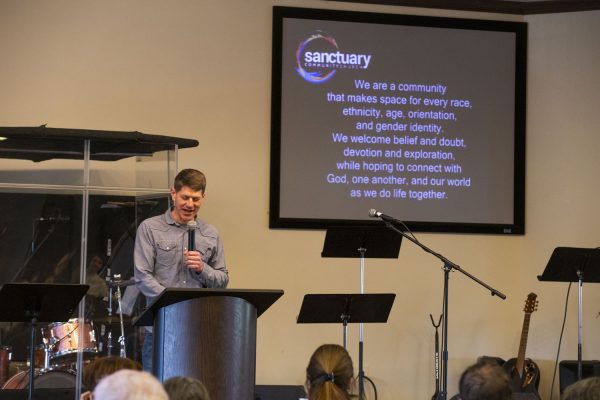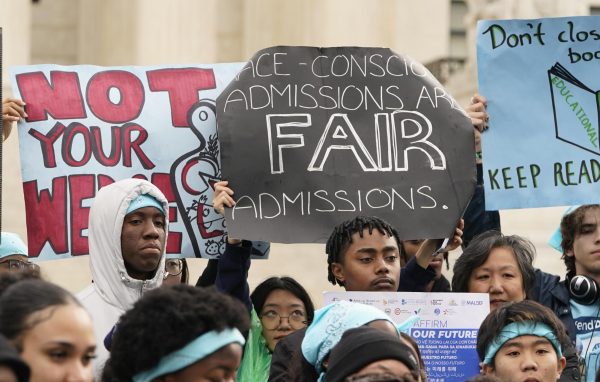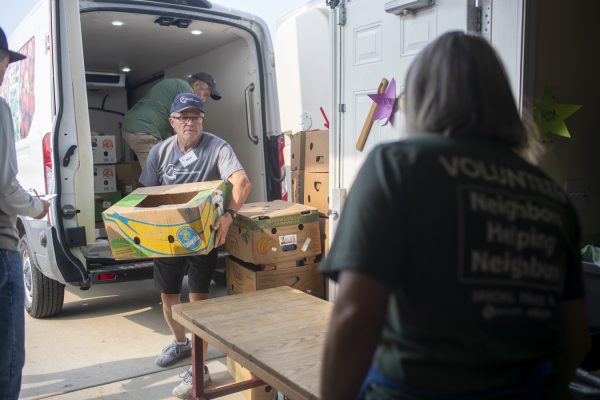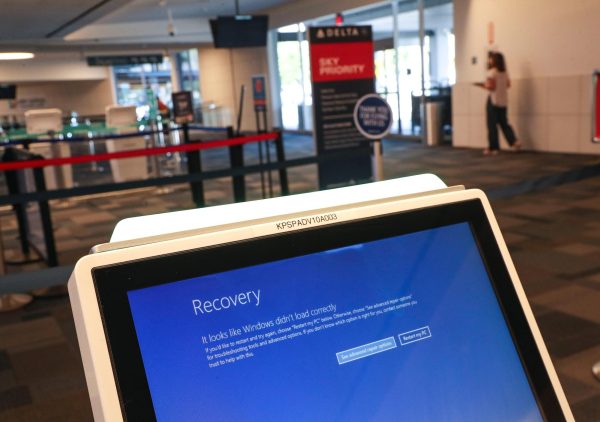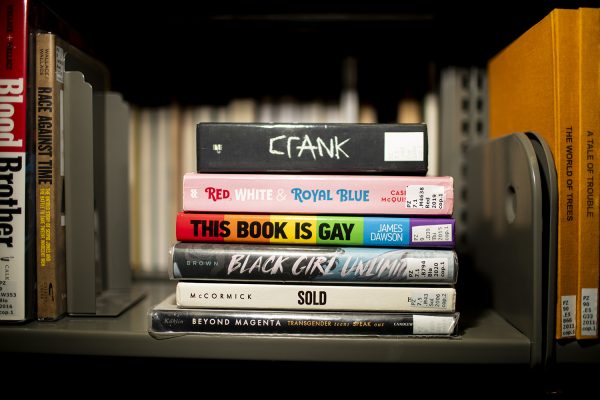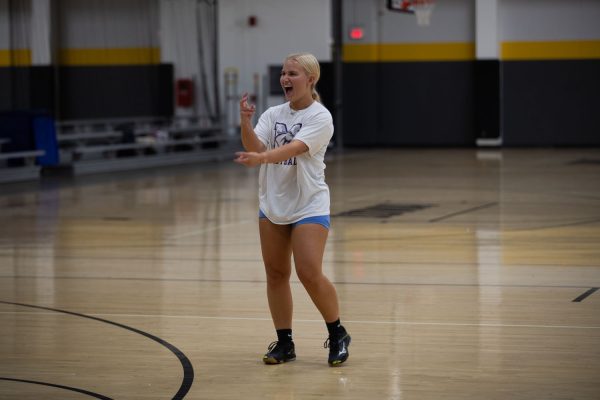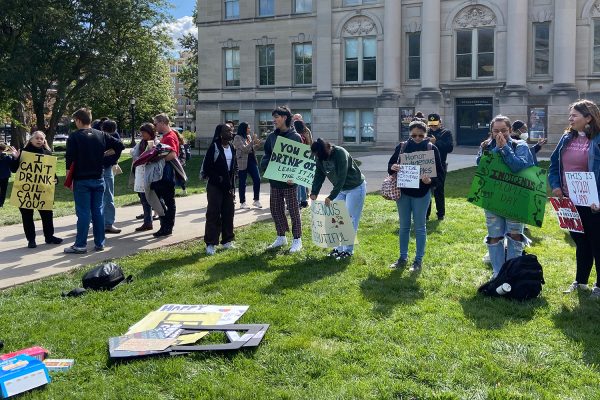The Black Lives Matter movement: A look inside its history in Iowa City
Members of the University of Iowa and Iowa City communities discuss the history, their involvement, and future of the Black Lives Matter movement.
Iowa City resident, Tessa Meyer (right), poses for a portrait alongside a friend on Saturday, July 4, 2020 on Linn Street in Iowa City. “I make something that is positive to show that we’re out here with love, not hate in our hearts.”
The Black Lives Matter movement has gained momentum in 2020, but its history in America — including Iowa City — began much earlier than summer protests.
The story of the movement begins in Florida on Feb. 26, 2012 when Trayvon Martin — a 17-year-old African American teen — was shot by neighborhood watch volunteer George Zimmerman while walking home from 7-11.
Zimmerman was acquitted on July 13, 2013, more than a year after Martin’s death.
Horrified by people’s reactions — including some that blamed Martin’s personal life and behavior for his death — domestic worker rights organizer Alicia Garza in Oakland, California created a series of posts titled “A Love Letter to Black People.”
Her final post read, “Black people, I love you. I love us. Our lives matter.” Anti-police violence organizer Patrisse Cullors from Los Angeles, California responded with the hashtag “blacklivesmatter” which was then shared by immigration rights worker from Phoenix, Arizona Opal Tometi.
On that day, a simple hashtag became the birth of a renewed call for racial justice and created a movement that shaped American history and is now being considered for a Nobel Peace Prize.
University of Iowa Multicultural and International Student Support and Engagement Associate Director Tabitha Wiggins was a residence hall coordinator on the UI campus in 2013.
At the beginning of the movement, Wiggins said she felt like the UI campus climate consisted of two worlds where Black and white people lived separately.
“I felt like I lived in a different world than my white colleagues,” Wiggins said. “I remember the George Zimmerman trial and when he was acquitted, they had no idea what was going on.”

The movement gained momentum in Iowa City in December 2014 when Serhart Taylor — a visiting artist and lecturer — displayed a Klu Klux Klan figure made up of newspaper clippings with racial tension and oppression on the Pentacrest.
Many students and faculty — especially people of color — protested the statue. Many did not know the statue was an art piece and thought a Klu Klux Klan chapter had emerged on campus — evoking fear.
Wiggins was called as a first responder to take the statue down. She and a group of student leaders had a town hall that same afternoon with then Chief Diversity Officer Georgina Dodge and Vice President of Student Life Tim Rockwood where students voiced their experiences with racism on campus.
Wiggins marks that day as the start of the movement in the UI community because people were finally starting to have conversations about racism.
“I felt like there was a racial reckoning on campus. People started to have conversations about racism and race,” Wiggins said. “We came together and started to develop relationships. It was also the impetus for a lot of programming now, like for Black History Month.”
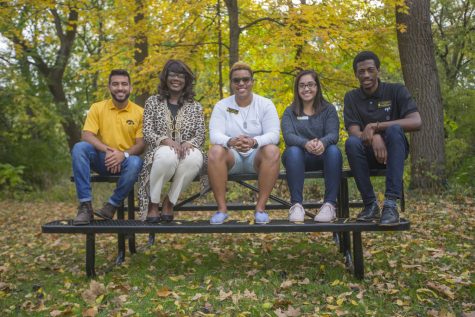
Another individual who led the early days of the movement is Iowa City Truth and Reconciliation Commissioner and Iowa Freedom Rider leader Raneem Hamad.
Hamad began her involvement with the Black Lives Matter movement as a senior at Iowa City West High School in 2016. Hamad said she witnessed students of color being targeted with hate crimes, which the school district wasn’t taking action to stop. Hamad and her friends decided to create the Students Against Hate and Discrimination organization.
Efforts made by the group included protests and lobbying with the school district. The organization specifically called for the implementation of a race and ethnicity class that all students would be required to take.
Although the class was never created, there were noticeable changes including considering and centering students of colors’ voices in the school district, she said.
Hamad continued her involvement during summer 2020 when she and her friends formed the Iowa Freedom Riders — a group that led the Black Lives Matter protests after George Floyd’s death on May 25, 2020. Hamad described his killing as the “straw that broke the camel’s back” in regard to the ongoing issue of systemic racism that people of color have continually faced.
“It’s almost as if there’s a wound that America just keeps on opening and never healing and gets opened every six months,” Hamad said. “Every death is almost like someone putting salt into your wound over and over again. A lot of people were reaching a breaking point of emotional tolerance of all this trauma that has been happening to us Black folk in America. This time people were willing to listen, and we were going to make sure our voices were going to be heard.”
Timeline by Molly Milder/The Daily Iowan
A key moment for Hamad was when protesters — including herself — were tear gassed as they marched toward Interstate 80. She described the event as a catalyst for her fight in the movement.
“It’s one thing to hear about the violence of the state, but to actually experience that violence when you’re fighting against that violence and advocating against it is a very humbling experience, and at the same time it truly empowered me,” Hamad said. “At the same time, I knew if what we were doing wasn’t right, we wouldn’t be getting the reaction that we got.”
Hamad added that the beauty behind these protests was the community support for the movement.
“Multiple people were arrested during summer, and we all figured out ways as a community to fund their bail or whatever they needed to be safe,” Hamad said. What is really powerful is the sense of community we have. And when this community does come together and band together around the idea of ‘We are all equally safe and fight for equitable justice,’ we can do so much more than any leader and any city council can do.”

UI sophomore Ryan Staub was one of many marchers who participated in protests that continued into the fall.
While a large part of the movement is to push for change, Staub said the march was also meant to be a celebration of Black lives.
“There was a lot of chanting and singing,” Staub said. “We would circle up at the stoplights and just celebrate the movement.”
Although Staub is not a person of color, he has an adopted brother who is African American that has given him a perspective on racial injustices.
The movement has received support from a broad array of perspectives. Around 60 percent of white Americans, 77 percent of Hispanics, and 75 percent of Asians showed support for the movement according to a Pew Research survey conducted this summer.
“Being a member of any community means we have a duty to look for and protect anyone who is being disenfranchised,” Staub said. “I want to use my own privilege to give back and try to reduce that inequity.”
While progress like the creation of the Iowa City Truth and Reconciliation Commission has occurred, activists said there is still work that needs to be done. Wiggins emphasized that some of the remaining work for the UI community specifically includes recruitment.
“We always talk about recruitment and retention of underrepresented minorities, but there aren’t things in place right now to do that,” Wiggins said. “We need to think through that and think of things folks of color need in order to feel safe and hold people accountable.”
Wiggins said she believes that young people will continue to lead the movement and take it to a place where racism isn’t only discussed but also comes to an end. She added, however, that the movement is far from over because real change takes time and commitment.
“Change takes time, and we have to be in it for the long haul,” Wiggins said. “It’s not a moment — it is a movement. We can be a country that can reconcile our past and work towards a more just future.”
Editor’s note: a previous version of this article incorrectly stated that an organization founded by Raneem Hamad was called Students against Hated Discrimination. It’s called Students against Hate and Discrimination. The Daily Iowan regrets the error.
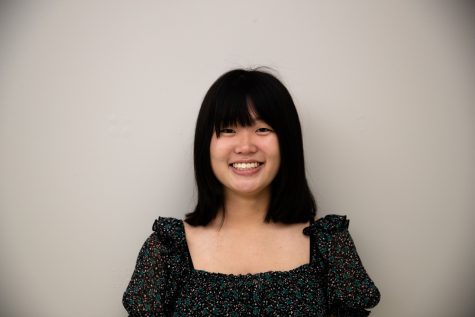
(she/her/hers)
Hannah Pinski is the Executive Editor at The Daily Iowan. She is a senior majoring in Journalism and Mass Communications and Music with...
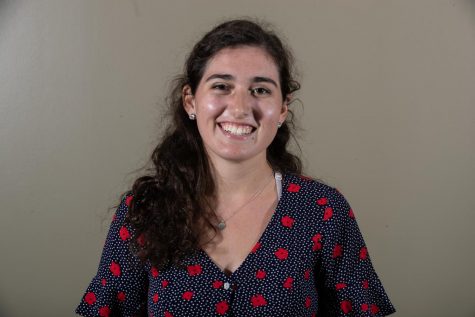
(she/her/hers)
Email: [email protected]
Katie Goodale is the Projects Assistant Visuals Editor at The Daily Iowan. She is a senior at the...
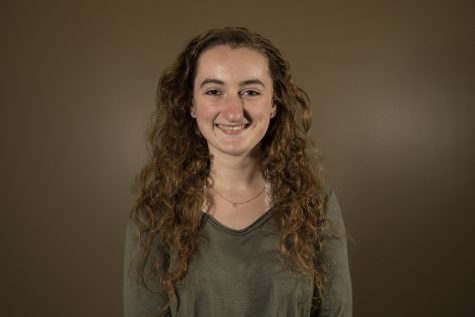
(she/her/hers)
Email: [email protected]
Hannah Kinson is the Photo Assistant Visuals Editor at The Daily Iowan. Hannah is a senior majoring in...




